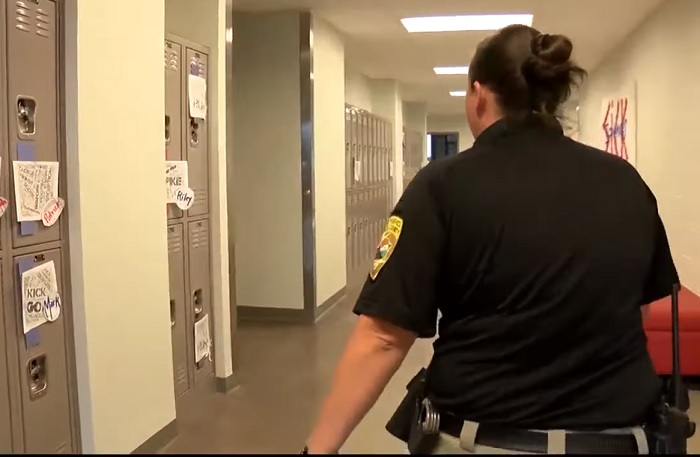
By Chief Joel F. Shults, Ed.D.
Before COVID the public outcry for school safety developed closer working relationships with law enforcement agencies. Among those responses was expanding police presence in schools to act as a deterrent, first response, and behavioral intervention to reduce the occurrences of school violence.
Now headlines continue to report the canceling of school resource officers since the in-custody death of George Floyd in 2020. Minneapolis schools, in a move consistent with many missteps of that city after the Floyd incident, moved to remove police in schools. While Minnesota law requires schools to run students and staff through five lockdown drills a year, school board member Kimberly Caprini. “I firmly believe that it is completely unnatural to have police in schools.” There have always been debates about the appropriateness and efficacy of police in schools, but “completely unnatural” is not part of a rational discussion. Typical of the police reform proposals, the decision was not based on data but ideology. Many school district patrons decried the lack of collaboration and information in making such a dramatic decision.
Their solution in replacing police in schools is a new safety team – made up of more than half of the specialists with experience in security, corrections, or law enforcement. The original job posting for these positions listed law enforcement as a desirable background, although that was removed after criticism. In other words, the skills and knowledge are apparently still valued, just not the badge.
In Portland, Oregon, the epicenter of how not to handle public safety, the superintendent of Portland Public Schools said he was “discontinuing” the presence of school resource officers (SROs) and would increase spending on counselors and social workers. That can certainly work for resolving internal conflicts, not so much for armed attackers from outside the school.
Schools in Los Angeles have cut the number of SROs by a third, diverting money to social workers and mental health professionals. Joining the trend of removing less than lethal tools from officers to control violent behavior, the Los Angeles Unified School District also voted to ban the use of pepper spray on students.
The claims for firing SROs are the usual diatribes against police violence (based on erroneous assumptions and contrary to data), systemic racism, and students of color feeling “uncomfortable”, and described as a “traumatic presence”. The anti-police headlines have overtaken headlines and studies showing that schools consistently fail to offer students of color equal opportunity to succeed academically. In comparison to isolated reports of actual police misconduct while on SRO assignment, the California Commission on Teacher Credentialing received 5,895 misconduct cases in 2019 – the highest number of instances of misconduct reported since at least 2007. The hypocrisy seems to go unnoticed.
Teachers are divided on the issue of police officers in schools, but sentiments against police in schools are not a clear majority. Some voice concerns that in situations where police need to be called in, responding officers may lack the knowledge of the school or experience in dealing with student populations.
Student safety that may be impacted by inviting access to biological males to female bathrooms, showers, and locker rooms seems to be less important than an ideological imposition of artificial equality with zero scientific basis or justification. Protecting young minds from the apparently hurtful cartoon drawings in Dr. Suess books, and removing the offensive title of “Mr.” from your favorite plastic potato toy, all seem to be more important than having a trained armed sentinel guarding our most vulnerable.
Students, teachers, staff, and citizens deserve fact-based decisions regarding the value of police officers in schools. The mission and expectations of SROs should be clearly defined between school and police leaders. Will they teach courses? Intervene in the enforcement of school rules and discipline? Guidelines and training recommendations from the National Association of School Resource can be helpful in those situations. There is no substitute for close collaboration between schools and local law enforcement in preventing and responding to violence. Whether that involves police officers remaining on-site or not is open for discussion. Summarily cutting those ties based on pre-conceived notions rather than data is not a strategy for safety, but merely a political statement.